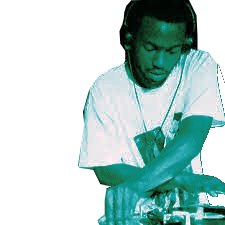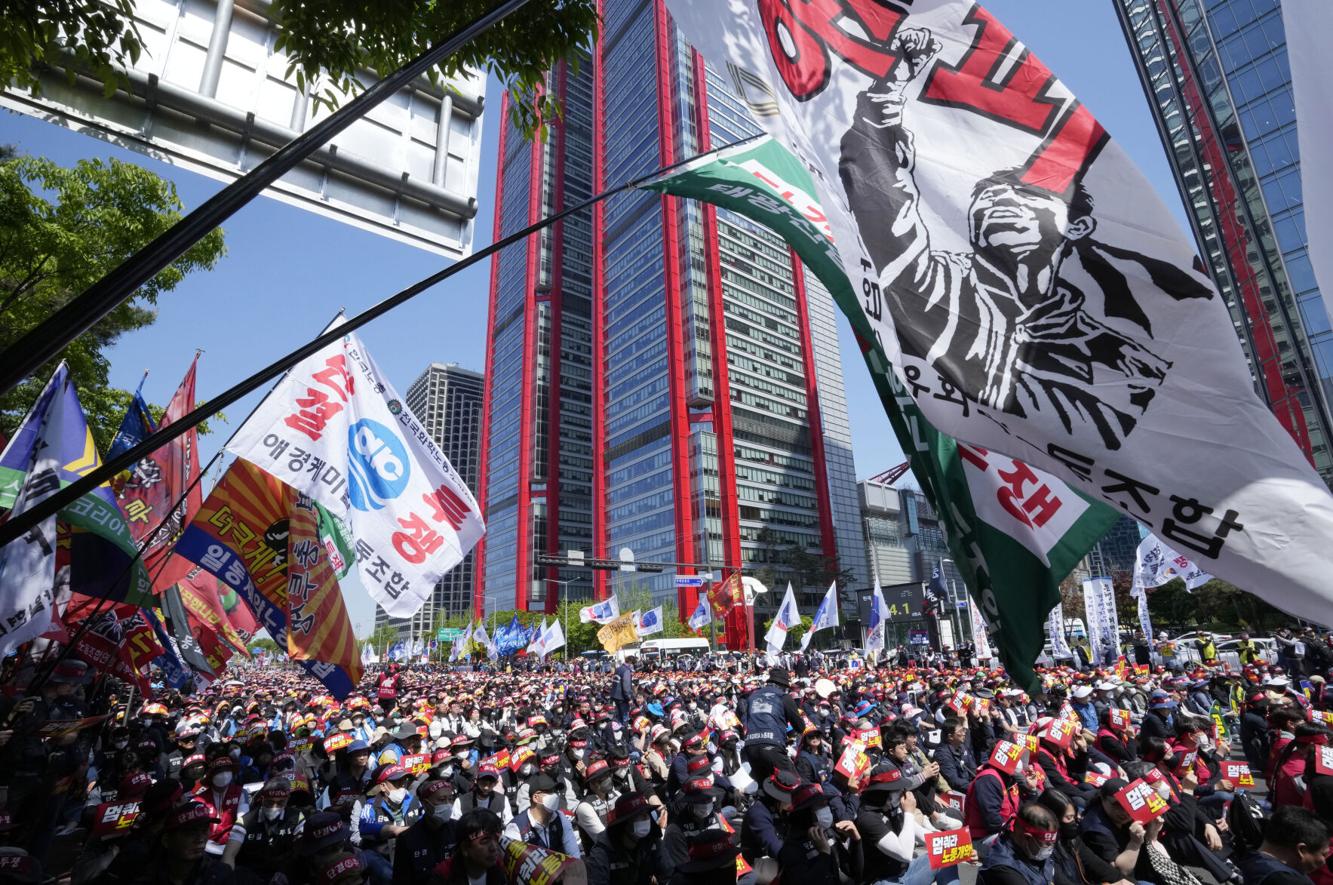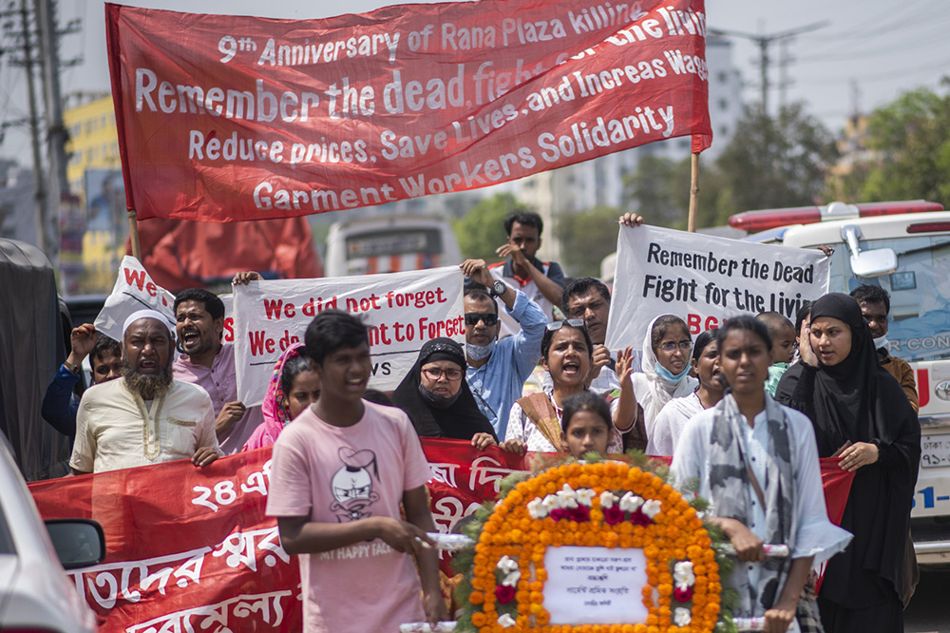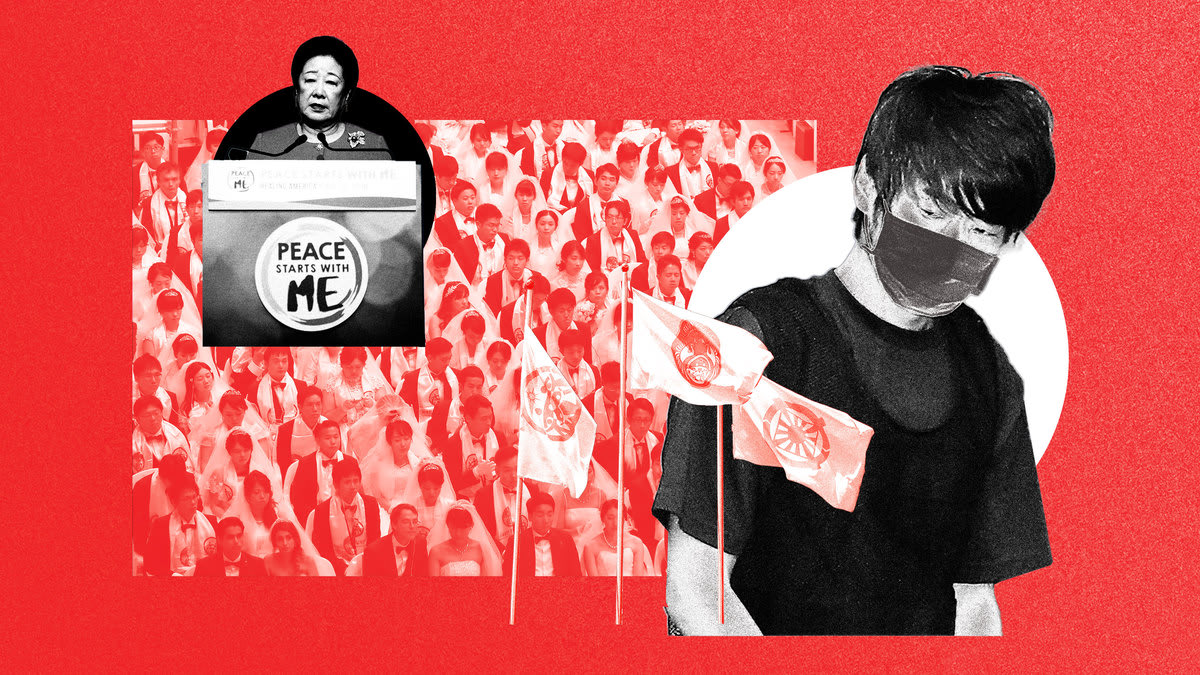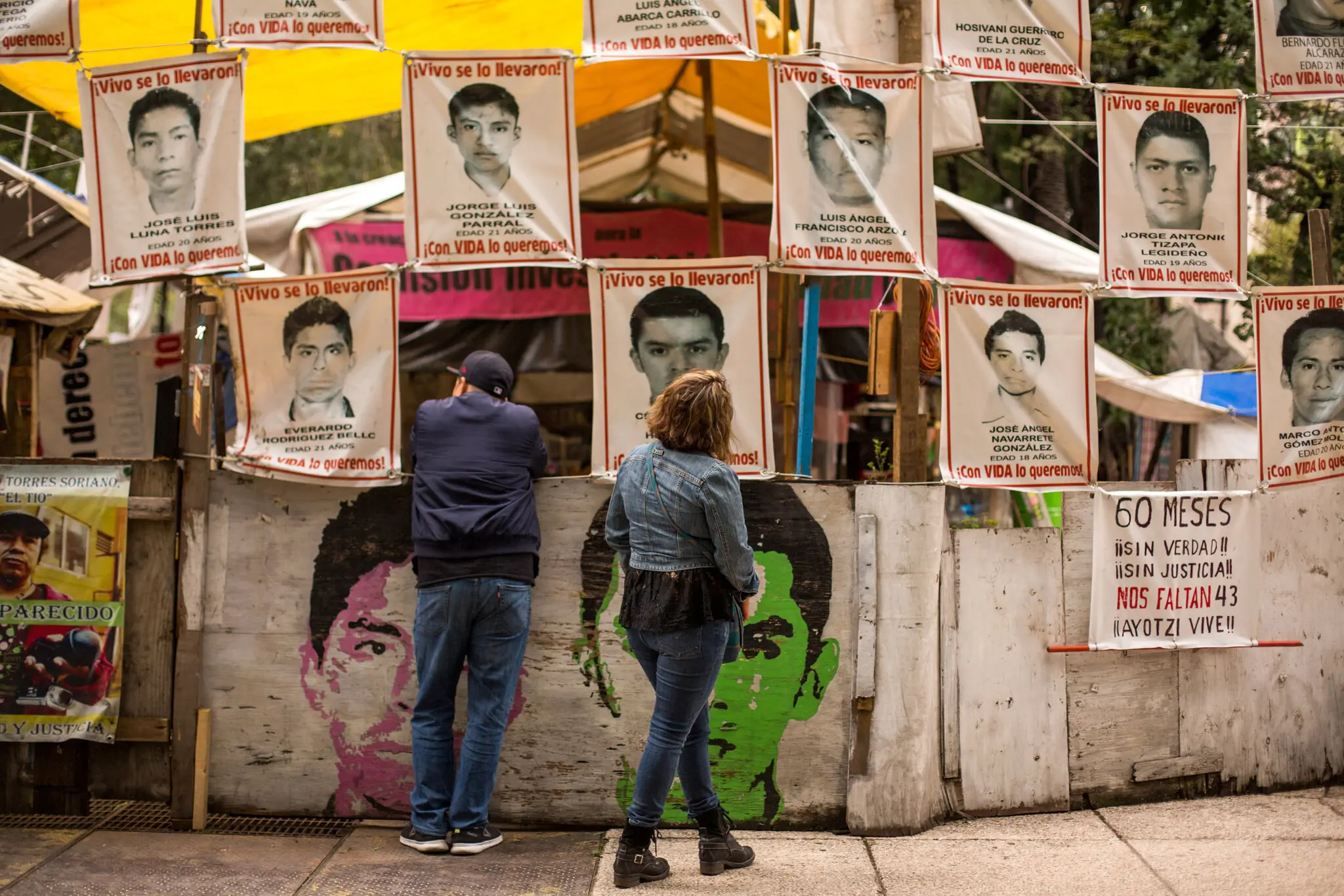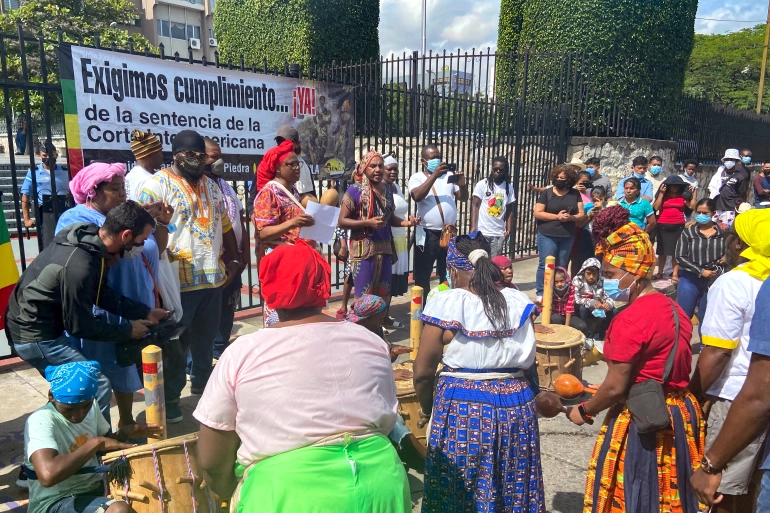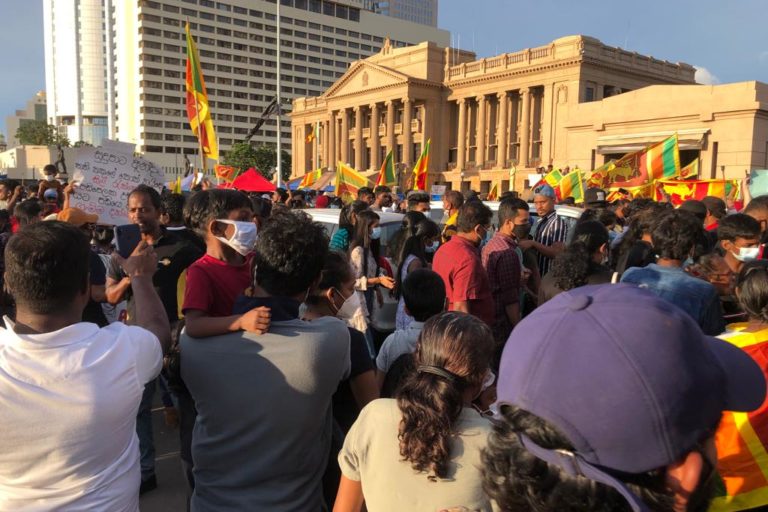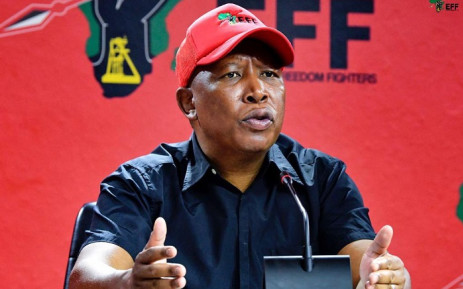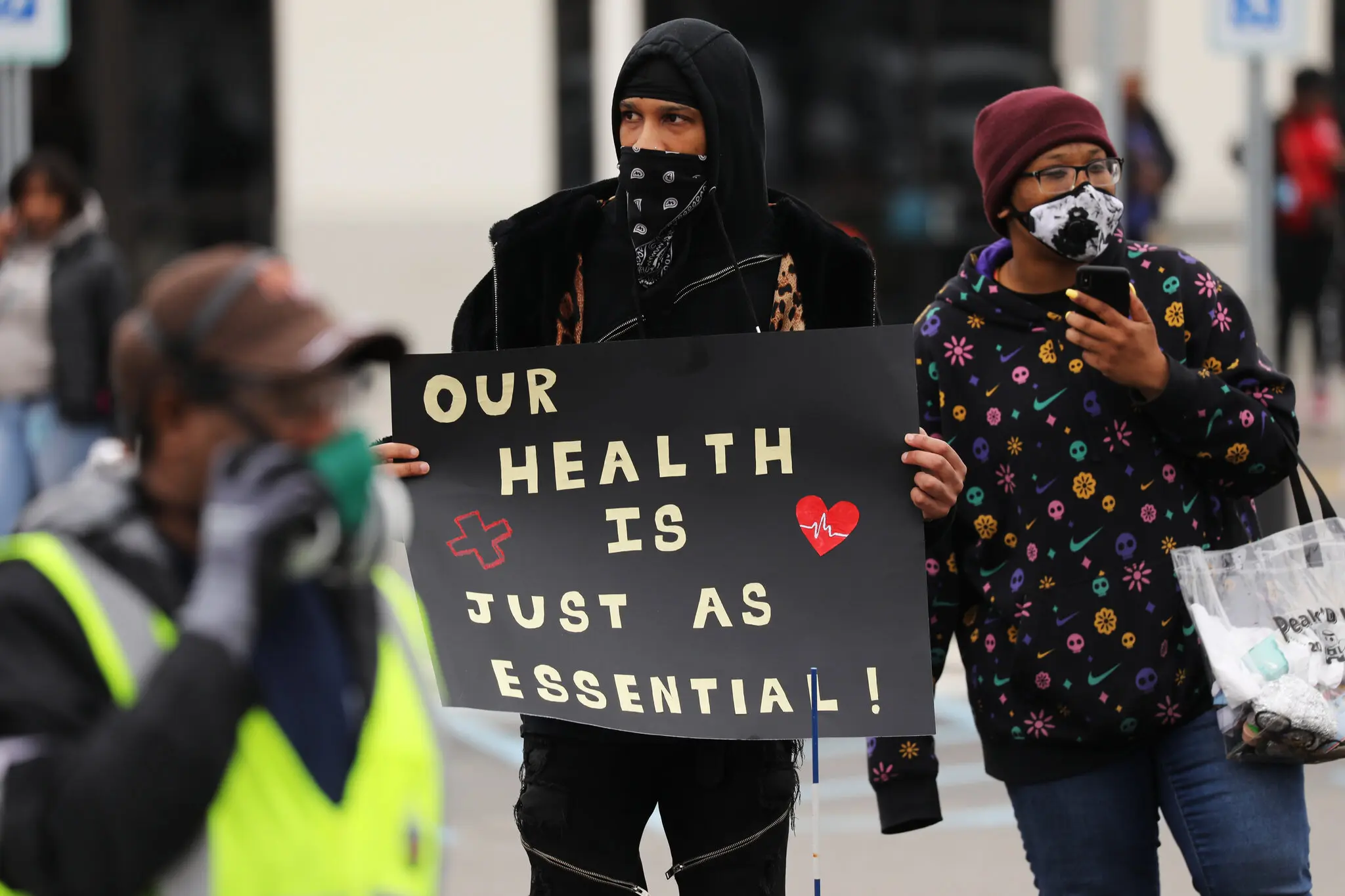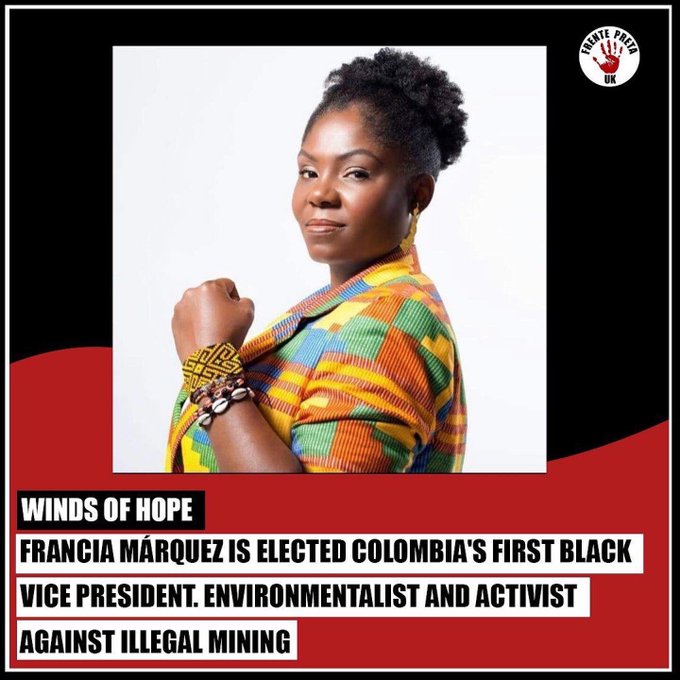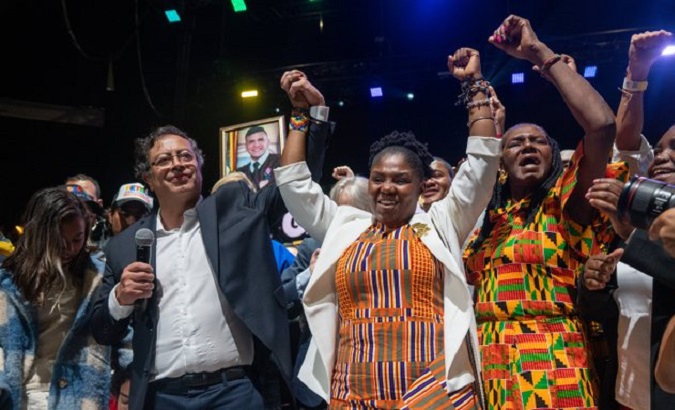when it's slow
by wanyakazi US Editorial Staff | Detroit MI 9:15PM
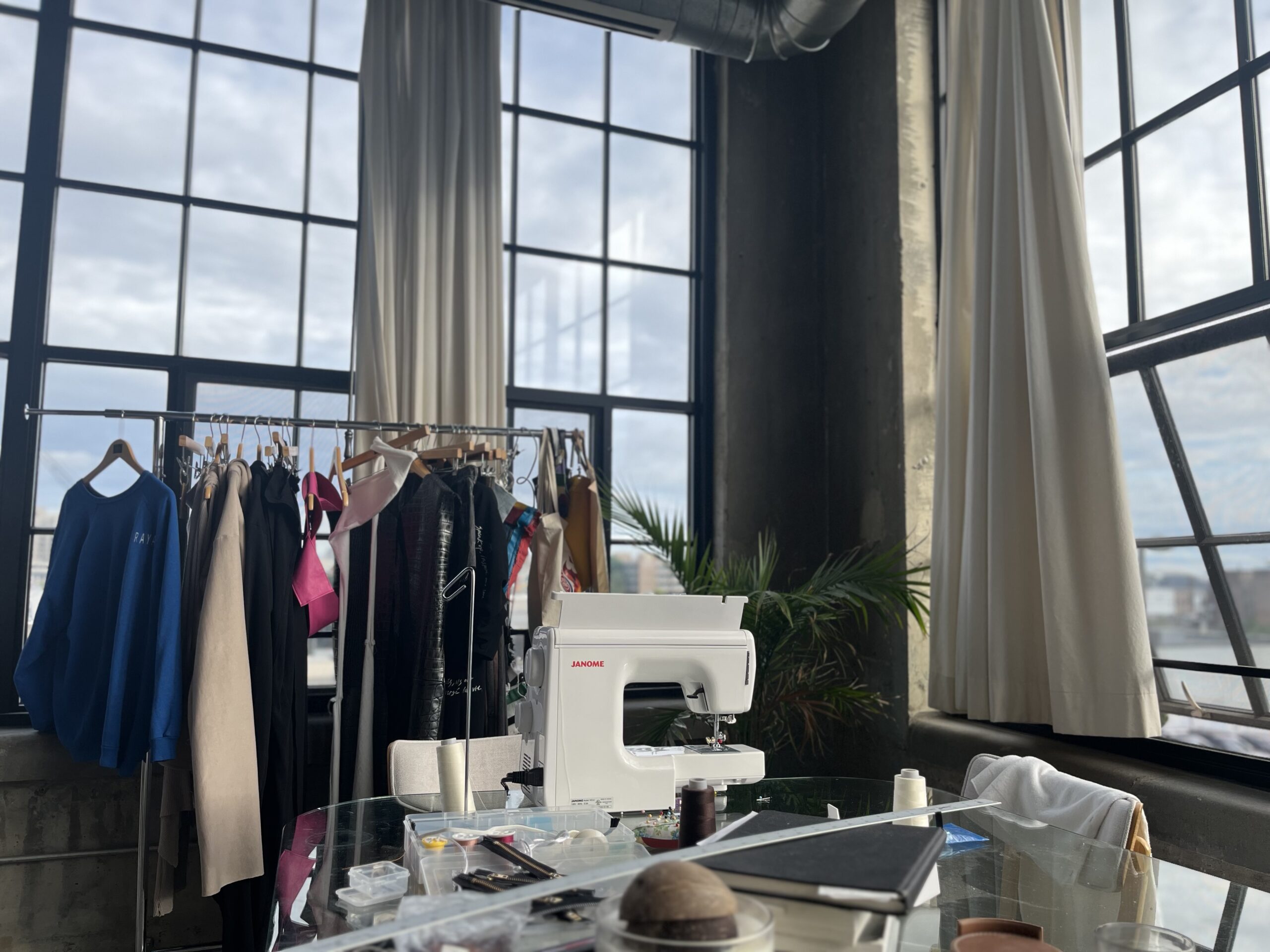
In fashion, as in other businesses, the word “slow” inspires fear. No one wants business to be slow. Trends move at warp-speed, interest winks more than it wanes, and in the retail sector, the consumer’s attention span seems an inexhaustible raw material out of which to sculpt new brand concepts and from which to squeeze mark-ups and profit margins. But as a ‘raw material’ (metaphorically speaking), attention span in today’s market expires more quickly than even possible before. The shelf-life of human attention and curiosity measures out in minutes, if not seconds.
Out of supposed necessity, fashion has become fast.
We live in the age of fast.
In Vijay Prashad’s essay in the Tri-Continental about the struggles of garment workers in Bangladesh, we see the human cost of fast fashion on labour forces around the world in factories collapsed, figuratively and very literally on top of workers struggling for dignity and humane living and working conditions. Then there are real raw materials and the brutal tax that we impose on the planet to source fibers and textiles and the toxic, carcinogenic, non-biodegradable synthetic materials that only re-fill the land, emit gases, and litter beaches and oceans. A million clean-up projects and recycled material brands and initiatives cannot replenish even the amount of water it takes to recycle waste or to make multi-use totes.
Proponents claim that fast fashion makes couture aesthetics and sleek styles more affordable and accessible to the people. But can people afford the devastating floods and massive storms that come from pollution and environmental degradation as scientists all over the world have evidenced? Can people afford poisoned waterways where the toxic waste and by-products of ceaseless production leach and leak? Can people afford to work for less than 5 dollars a day in detrimental and even deadly conditions to produce pants that will soon mingle with cans of beer and toilet paper in rubbish bins in the car parks across ‘developed’ and hyper-industrialised nations?
It does not seem to be enough to ‘clean up’ beaches, to replant trees, to use reconstituted polymers even at 70% in sneakers that still take truckloads of drinking water from the developing world to produce. Scientists argue that industries need to drastically cut the production of new materials altogether, no matter how much ‘recycled’ material or recycled plastic is mixed in with it. Recycling itself is becoming an unsustainable burden on the water systems of the world.
In the age of fast fashion, with a newly emergent awareness of the urgency of these questions and the answers they demand, many are advocating for the rehabilitation of the idea of slowness in fashion production and consumption.
One designer in Detroit is leading the way in re-sourced, re-cycled, re-claimed textiles, without compromising on quality or in the tradition of couture craft work.
We sat down with fashion designer, RayA Sacco, in her studio to talk about her business RAYA (which is rapidly taking off, selling out of runs in a matter of days) to talk high-fashion, upcycling, sustainability, and the need to slow down production and consumption to build businesses that last while helping to keep and recover waste that will otherwise destroy our place on the planet.
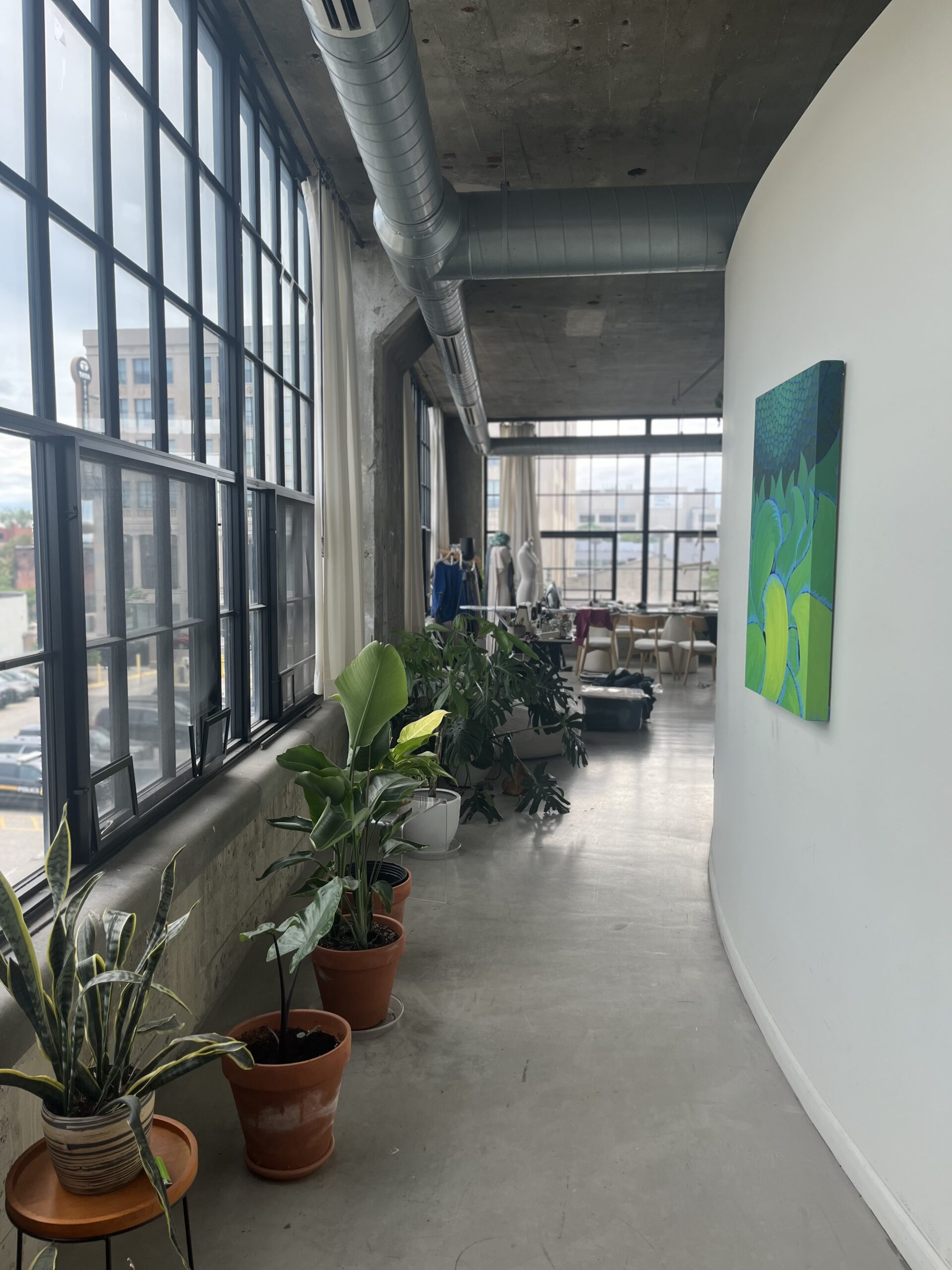
6:30 PM Burroughs St, Detroit MI
Wanyakazi Editorial I only have three questions. I’m gonna tell you all three of ’em, and you deal with them in the order that you choose. Why did you start your business? What’s your relationship to upcycling and what’s your understanding of your business’ relationship to environmental sustainability?
And when I say, “what’s your relationship to upcycling”, I’m also implying “what’s your relationship to fast fashion?” So why did you start your business? Or let me backtrack, why did you start making clothes?
RayA Honestly, I was in fashion… the start would be retail, but I always found myself wanting to sew, in every aspect of my life. So my mom was actually probably the number one reason why I became a creative because she was just really good at dressing [and styling].
[My mom] always had a unique style growing up. We bonded over shopping. So that’s how I fell into it at a young age. And then I always wanted to sew; I would go in between sewing classes here and there, throughout different stages of my life.
I was trying to find my place in the world, especially at 18, not knowing what I was gonna do. Went to college, got a journalism degree, thinking I was gonna be just a writer for a magazine, because I like to write.
This is the only skill that I know that I can use. You know, I didn’t go to art school. I can work in a magazine in New York. That’s how I’m gonna segue into fashion. That’s what I was thinking about. I always sketch[ed] and I always had that urge to create.
I just didn’t know why or how, or maybe I just wasn’t ready. I wasn’t patient with myself enough to sit there and learn, but when I got to New York, I started styling and working with so many different designers and photographers and it was never my vision.
As a stylist, you’re kind of the second in line, right? It’s usually the designer or the photographer, and then it’s like you kind of like adding onto the pieces, so, After doing that for three years, I was like, “no, like this isn’t this, isn’t it?” So, styling on and off for three years, working in retail, then coming back here, starting my business; I started as a vintage business.
And then also I was selling independent designers, so small designers like me. Just showing people a new way to shop. I was like, “oh, I can show you guys, this is how I shop”. I thrift or I shop with my local designer down the street in New York. That’s what I thought was so cool: no one else would have what I had.
After that, after two years into my business, the styling was not enough to get my vision. It was still not there. And complete. So I think the reason why I started to make clothes was, you know, just coming from always being around every avenue and fashion from retail to styling to, um, Writing, whatever it was like it never made sense until now.
So designing clothes and engineering clothes, what people wear every day, it’s the first thing: you wake up, what are you gonna wear? Besides brushing your teeth or drinking coffee, you gotta put something on.
It’s the most basic human need. It was always important to me. After exhausting every single creative outlet, I needed to do clothes. It was almost a need.
Wanyakazi You talked about being in vintage; talk about how you transitioned from vintage and your relationship to different kinds of fibers and textiles and to getting to the point now where you’re cutting your own panels, your own patterns, to upcycling. Talk about that.
RayA If you pay attention to your […] for me it was my mom’s closet. She would always be like, ‘oh, I have this leather skirt from the eighties, like you can wear it”. She would save a lot of her clothes and I’d be like, ‘wow, this material is so much better, right?’
The cut is so much better. The thought process is so much better. The construction’s so much better. So it was like, I kind of fell in love with it from, from that and then like going into thrift stores in New York or like Chicago and like. Like just being like, oh, this is a hundred percent genuine leather and this is like a hundred percent fur and it’s like only 50 bucks.
Or like it was like, yeah, it was also cheaper to buy secondhand, but it was also just like, it was much better quality. Right? Cause whenever you walk into a Forever 2… yeah, someone at 18 can afford Forever 21 and H&M and Zara, right? But after one or two washes, it’s really garbage, you know? It’s almost disposable.
Wanyakazi Fast fashion… can you afford it? Is the real question. Right? How many wears do you get out of a dollar?
RayA Barely one [wear for every dollar]. Yeah. Yeah. Yeah. I fell in love with the quality, the craftsmanship. And that clothes shouldn’t really be that ‘affordable’. Back then, everyone couldn’t have the ‘baddest’ clothes. Now everyone can have it, but at what cost and how many outfits do you really need? Like do guys need to buy every weekend. We need to go on Fashion Nova and just keep buying?
It doesn’t make sense when you can buy a hundred dollar T-shirt. Yeah, it’s a little bit more, but it’s gonna have that long like longevity that you’re looking for, maybe two, three years, maybe longer. So it started with the vintage and then the upcycling happened cuz it’s the future. Last year, it was like, “okay, well I can’t just contribute to this design problem.”
Wanyakazi Oceans full of old clothes.
RayA Every brand in the book.
Wanyakazi Birds, choking on socks.
RayA Literally. Yeah. And then every brand and their mom has another brand and another brand; how many brands are there? And then these factories are producing at such a fast rate. And at what cost? I don’t think everyone knows that. The kids in China making our clothes [sometimes] getting paid $2 a day. And we’re wearing that name brand T-shirt we fuck with or whatever.
Wanyakazi There’s people in LA making hardly anything!
RayA And you’re paying a higher price for that. But I rather support my friend Keiko down the street, Japanese, 52, dies for fashion, loves it, blah, blah, blah. And like she’s selling garments for a hundred, 150. And no one else is gonna have it. I know who made it. She made it. She loves making clothes.
This is her art. This is her creativity. I poured into her and then she like poured into me. And it’s that circle of life that we’re all like l looking for. I love that. So, that’s kind of where it started. And then the upcycling was a no-brainer. I had a bunch of vintage denim in my collection just from selling vintage. And I was like, all right, cool. I’m gonna start with vintage; when it’s not selling, I’m just gonna upcycle this denim.
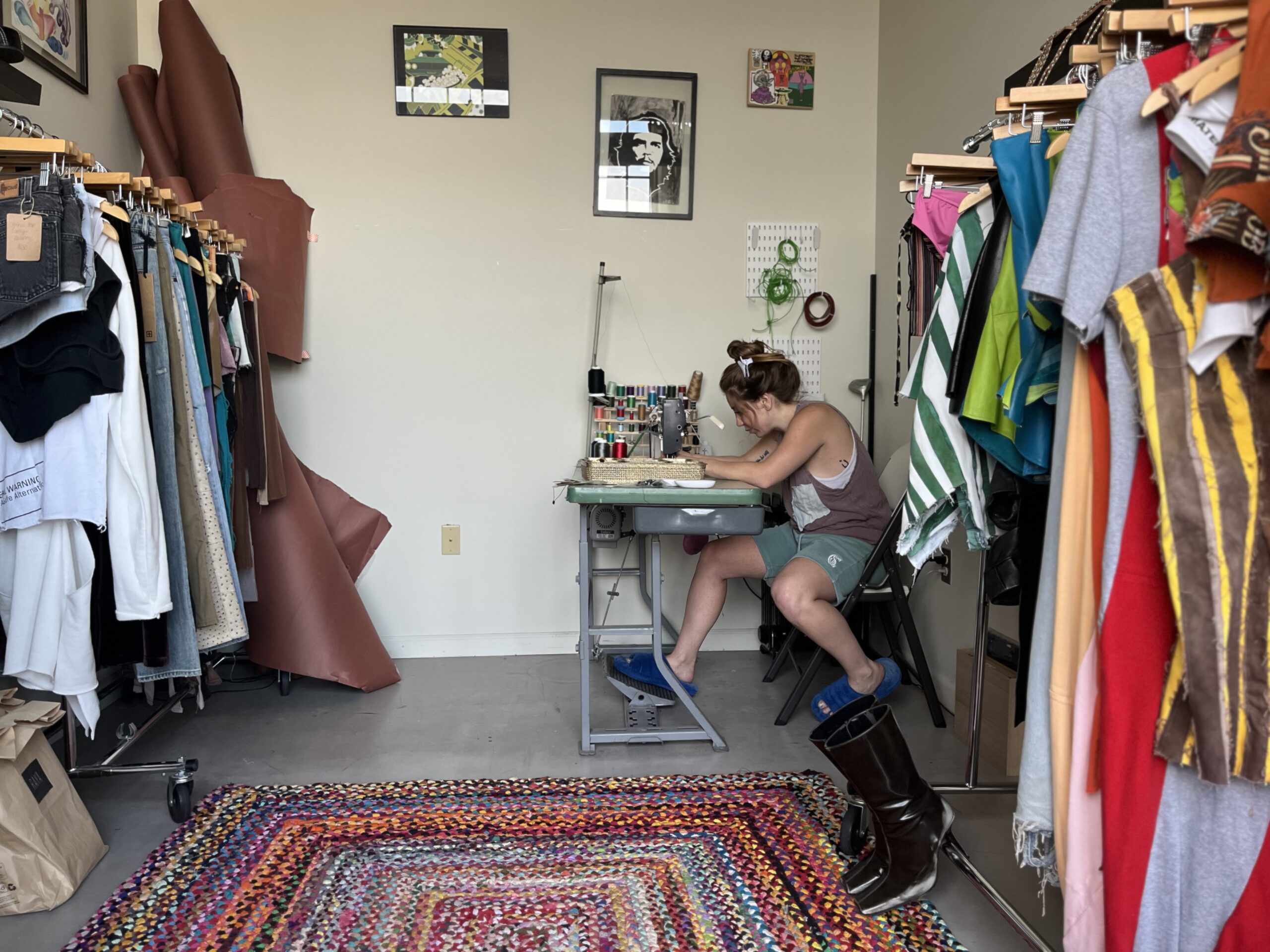
Wanyakazi Editorial
A huge factor in fashion is sourcing. So if you’re sourcing already from like high quality materials, you’re cutting out a big problem.
RayA Upcycling is the future. I mean, the kids are doing it. It’s all over TikTok. Like, I’m not even a kid anymore. I’m a millennial, I’m almost 30 now.
Wanyakazi We’re grandparents.
RayA You know what I’m saying?! Like 18 year olds are sewing and learning on TikTok. And people are dyeing in their basements and, you know, they’re, they’re already doing it. So luxury’s always gonna be luxury, like Louis Vuitton and Chanel. But they’re doing everything like, you know, it’s a someone hand-making that shit. That coat that they’re buying is like $5,000, but for a reason. Cuz someone’s hand making it to perfection and there’s only like a hundred or 200 of ’em to go around.
So there’s a price, you know, like. It’s art; it’s livable art. It’s tangible art, like you can wear, you can feel it, you can live in it. You can’t live in all types of art, you know? You can live in music, you can watch a film, you can look at a painting all day, but you can’t like live in it, you know?
Wanyakazi [laughing…] We don’t walk around with boom-boxes anymore, it’s kind of eccentric, right? But you can announce fashion to any room. Literally you can make a huge announcement in any room and not be considered crazy. If you wanna make an announcement, otherwise you’d have to get up and stand on the table and everyone would be like, who is this crazy person?
And do you consider your label couture?
RayA Yeah. Because it’s made to measure. And so many people are asking me, “oh, how are you gonna scale the business?” And I don’t really know, because it’s not like I wanna go to a factory in China and be like, okay, make 20,000 of this. This vendetta top, right? Like my most popular item, right? [Gesturing to a line of her trademark tops on a rack].
[Over-production] just takes the fun outta everything, right? And the beauty out of it, People can only come [to my studio] if they know me, if I met you and the vibe [is right]. Because if you come here, it’s a full on experience. I am gonna measure you. I am gonna take my time on, on a garment for you. It’s gonna be one of one, it’s for you. Right.
Wanyakazi And do you think your business is sustainable, contributing to sustainability? You talk about upcycling: what’s, what’s your business’s response to fast fashion? Is it slow fashion?
RayA It’s getting back to the basics. Because I didn’t appreciate clothes until I started sewing. And that was just a year ago. I was like, damn, this shit’s really hard.
This shit’s no joke. This is very time consuming. This is very, very meticulous. There are so many moving parts I gotta think about everyone’s body. How are you gonna move? How are you gonna feel? It’s really difficult. It’s like surgery.
This whole time we’re thinking it’s so damn easy to make a shirt, cause it’s 10 bucks. Right. So going back to the basics of sewing, you know, Whether that’s made in America or not, it doesn’t matter. But not producing that much. We don’t need to do that.
Why does every brand need to have [so much] inventory, so much back stock? You guys are not selling all that.
Wanyakazi It’s getting dumped. Fake donations. The donation bins, they go to West Africa. The people don’t need those clothes.
RayA They don’t even want those clothes. They make their own clothes. They make better clothes. Natural fibers, a hundred percent cotton linen.
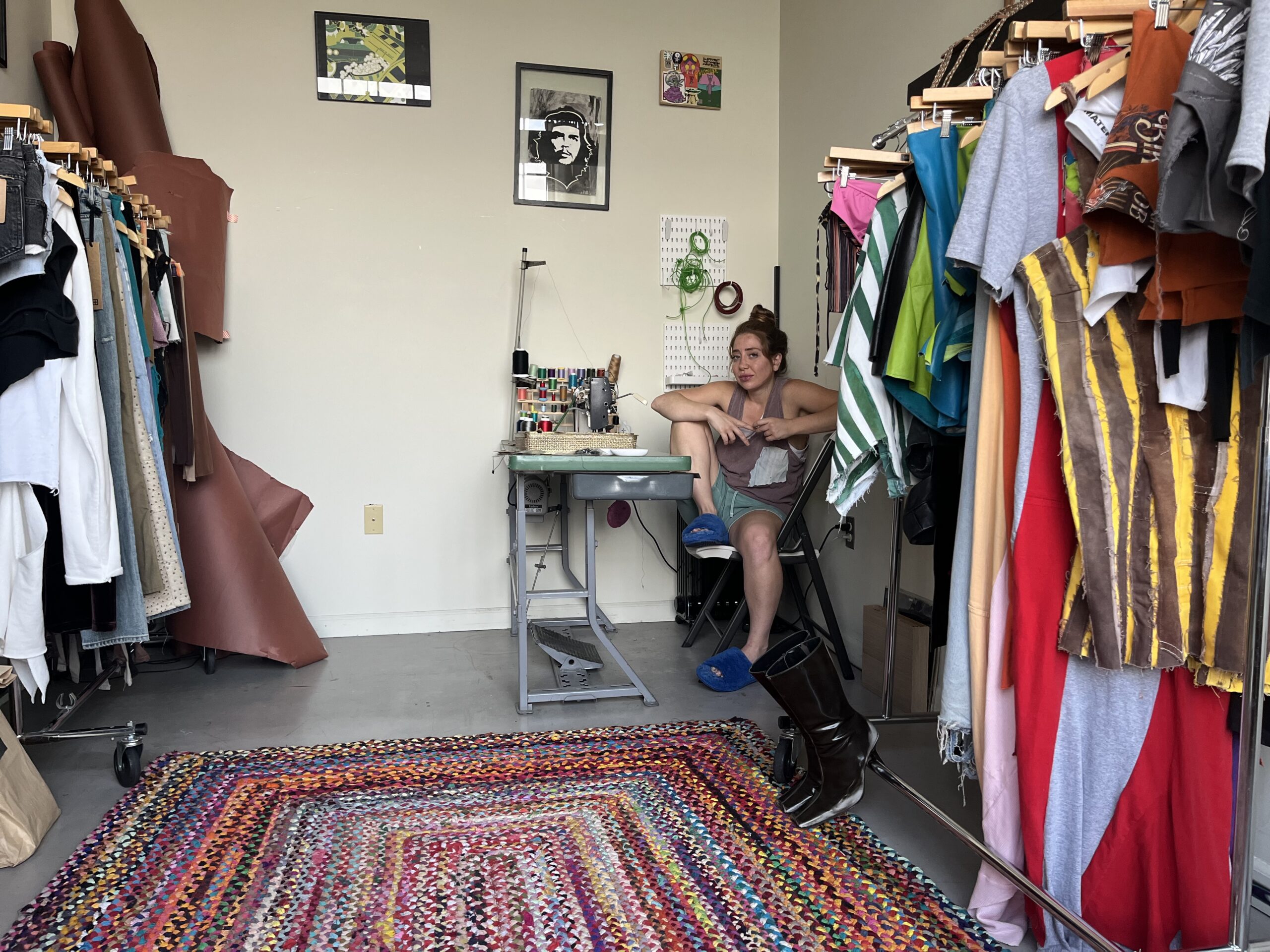
Wanyakazi So talk about how your business contributes to sustainability?
RayA It is sustainable because I’m using only dead stock material. So if it is a brand new set, a knitwear, a set that I make, I’m sourcing it from a nonprofit organization called FABSCRAP. They’re dedicated to ending textile waste. So they love [my project]. They take in fabric from like other designers, like specifically in New York, but like all over the nation and like, they’ll house it and sell it to smaller businesses like me, at a better price point.
But I’m only taking what they have. So I’m only creating what I see. I’m not going and grabbing like the purple lace from that, you know, garment from the garment district in New York that has any kind of fabric I’ll ever see. So like I’m going to [FabScrap] because they’re already taking it from someone that didn’t use it. And from that hundred to 200 selections, I’m picking out from that. So my choices are minimal, but I create with what I have, and then I create to the best of my ability. And then with all my scraps, I save them and then I repurpose those too. I just made a whole bag collection from my first scraps.
I made a huge 10 by 10 foot rug and then I cut it and made six tote bags. I had one box left over of like trimmings that I just didn’t know what to do with. And I like threw it out. It was the only thing I ever threw out.
Wanyakazi It’s circular production. Yeah. We, you should make a graphic about that. The circle, the circle of production for your brand.
RayA That’d be sick. That run took me like two months. Yeah. Like literally could not stop working on that. That’s your rug. Just to take my scraps from my first collection, to close that chapter. To start my second, I needed to close [that chapter]. So I worked on it for two months, and then I made bags. [So, now] I have a little bit of a process.
Wanyakazi Editorial I definitely wanted to make a note that you are of an immigrant community.
RayA Yeah. First generation.
Wanyakazi And you’re Middle Eastern, and that’s really important. In Detroit it’s important. There’s a stereotype of Middle Eastern people as consumers and hyper consumers, you know, like at the malls and the big house and the big cars and the even, you know the Shahs, the show in LA. Keeping up with Kardashians… It does a disservice. Always painting even Italians and other Mediterranean people as over consumers. And to highlight someone who’s ‘Middle Eastern’, who’s a producer, who’s not over consuming and is actually saving waste, but doing it in a way that’s still really cool. I think it’s really important to uplift that. I love that. Virgil had this quote, “you can do it too”. He always used to say that you can do it too.
RayA He was so cool! He made that website, “How to Start a Brand”. I looked at that closely too when I started.
Wanyakazi He wanted to put people on. Yeah. He wasn’t perfect, but he wanted to put people on. “You can do it, too” is uplifting in a way. It seems like a cliche. But it’s a good reminder that if you see something and you really inspired, to go from excitement to inspiration… go from interest to inspiration. Seeing you do it too is nice. I feel like you embody “You can do it too.”
[I’m gonna take a picture of your (sewing) machine]
RayA I mean, it took a long ways to get here. For sure. It’s not easy, but it’s way more fun than like clocking in, you know? So to me, it’s worth it. It is worth it. It’s worth it. It’s absolutely worth it. But I also just like, can’t stop creating, you know. You know what I mean? Like, it’s an urge, it’s what I am
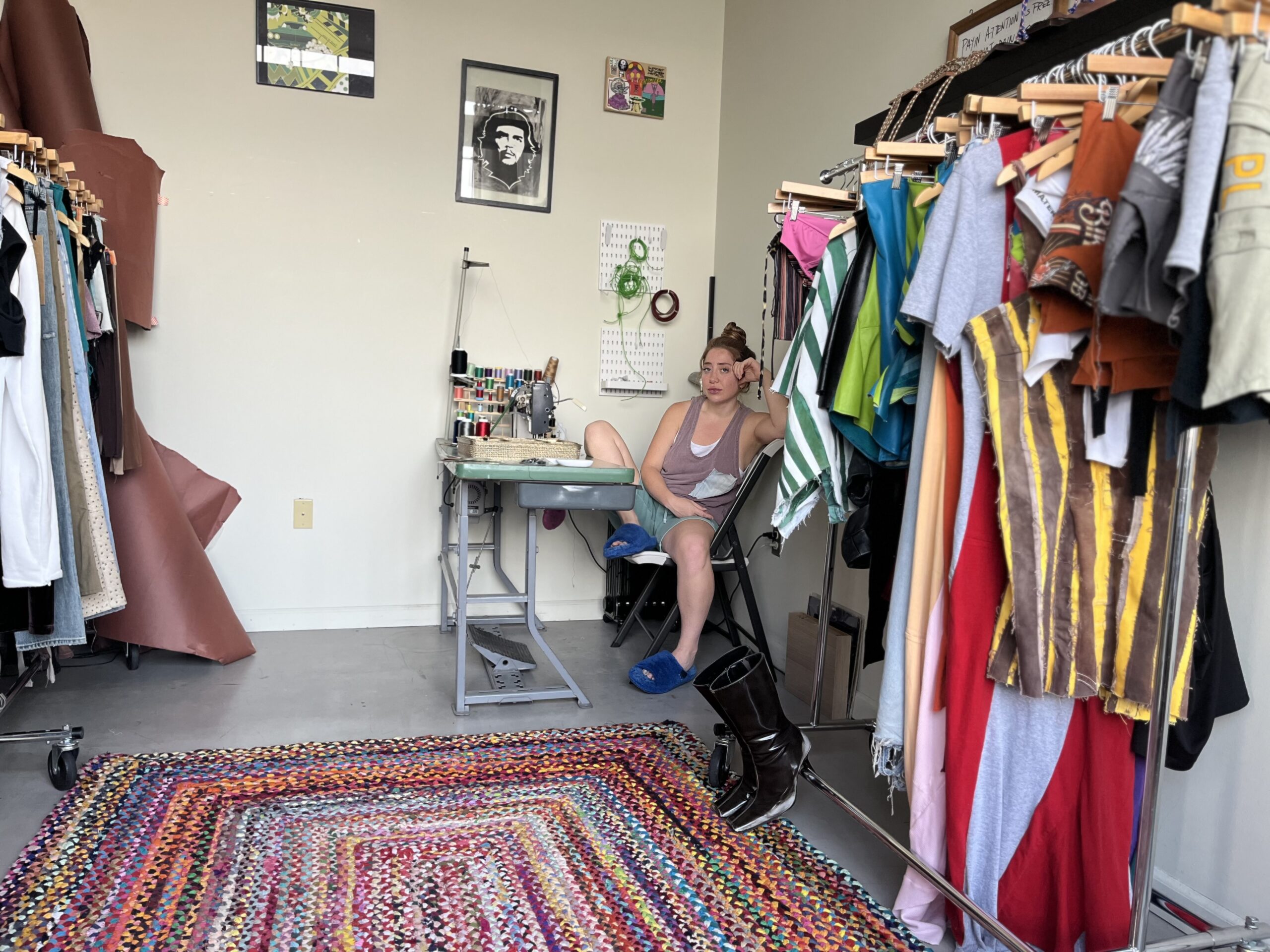
This article is written by the Wanyakazi Editorial Staff in conversation with RayA Sacco at her studio in the New Centre area of Detroit in advance of the General Baker Institute’s Thrift the Runway two-day extravaganza dedicated to uplifting the practice of upcycling, eliminating clothing waste, and promoted environmental sustainability and accessibility within fashion for the community and for everyday people. 24 June 2023 | 15789 Livernois Detroit MI
Environmental Justice | Worker’s Rights | Sustainability | Fashion | Culture | Business & Commerce
Wanyakazi Editorial I only have three questions. I’m gonna tell you all three of ’em, and you deal with them in the order that you choose. Why did you start your business? What’s your relationship to upcycling and what’s your understanding of your business’ relationship to environmental sustainability?
And when I say, “what’s your relationship to upcycling”, I’m also implying “what’s your relationship to fast fashion?” So why did you start your business? Or let me backtrack, why did you start making clothes?
RayA Honestly, I was in fashion… the start would be retail, but I always found myself wanting to sew, in every aspect of my life. So my mom was actually probably the number one reason why I became a creative because she was just really good at dressing [and styling].
[My mom] always had a unique style growing up. We bonded over shopping. So that’s how I fell into it at a young age. And then I always wanted to sew; I would go in between sewing classes here and there, throughout different stages of my life.
I was trying to find my place in the world, especially at 18, not knowing what I was gonna do. Went to college, got a journalism degree, thinking I was gonna be just a writer for a magazine, because I like to write.
This is the only skill that I know that I can use. You know, I didn’t go to art school. I can work in a magazine in New York. That’s how I’m gonna segue into fashion. That’s what I was thinking about. I always sketch[ed] and I always had that urge to create.
I just didn’t know why or how, or maybe I just wasn’t ready. I wasn’t patient with myself enough to sit there and learn, but when I got to New York, I started styling and working with so many different designers and photographers and it was never my vision.
As a stylist, you’re kind of the second in line, right? It’s usually the designer or the photographer, and then it’s like you kind of like adding onto the pieces, so, After doing that for three years, I was like, “no, like this isn’t this, isn’t it?” So, styling on and off for three years, working in retail, then coming back here, starting my business; I started as a vintage business.
And then also I was selling independent designers, so small designers like me. Just showing people a new way to shop. I was like, “oh, I can show you guys, this is how I shop”. I thrift or I shop with my local designer down the street in New York. That’s what I thought was so cool: no one else would have what I had.
After that, after two years into my business, the styling was not enough to get my vision. It was still not there. And complete. So I think the reason why I started to make clothes was, you know, just coming from always being around every avenue and fashion from retail to styling to, um, Writing, whatever it was like it never made sense until now.
So designing clothes and engineering clothes, what people wear every day, it’s the first thing: you wake up, what are you gonna wear? Besides brushing your teeth or drinking coffee, you gotta put something on.
It’s the most basic human need. It was always important to me. After exhausting every single creative outlet, I needed to do clothes. It was almost a need.
Wanyakazi You talked about being in vintage; talk about how you transitioned from vintage and your relationship to different kinds of fibers and textiles and to getting to the point now where you’re cutting your own panels, your own patterns, to upcycling. Talk about that.
RayA If you pay attention to your […] for me it was my mom’s closet. She would always be like, ‘oh, I have this leather skirt from the eighties, like you can wear it”. She would save a lot of her clothes and I’d be like, ‘wow, this material is so much better, right?’
The cut is so much better. The thought process is so much better. The construction’s so much better. So it was like, I kind of fell in love with it from, from that and then like going into thrift stores in New York or like Chicago and like. Like just being like, oh, this is a hundred percent genuine leather and this is like a hundred percent fur and it’s like only 50 bucks.
Or like it was like, yeah, it was also cheaper to buy secondhand, but it was also just like, it was much better quality. Right? Cause whenever you walk into a Forever 2… yeah, someone at 18 can afford Forever 21 and H&M and Zara, right? But after one or two washes, it’s really garbage, you know? It’s almost disposable.
Wanyakazi Fast fashion… can you afford it? Is the real question. Right? How many wears do you get out of a dollar?
RayA Barely one [wear for every dollar]. Yeah. Yeah. Yeah. I fell in love with the quality, the craftsmanship. And that clothes shouldn’t really be that ‘affordable’. Back then, everyone couldn’t have the ‘baddest’ clothes. Now everyone can have it, but at what cost and how many outfits do you really need? Like do guys need to buy every weekend. We need to go on Fashion Nova and just keep buying?
It doesn’t make sense when you can buy a hundred dollar T-shirt. Yeah, it’s a little bit more, but it’s gonna have that long like longevity that you’re looking for, maybe two, three years, maybe longer. So it started with the vintage and then the upcycling happened cuz it’s the future. Last year, it was like, “okay, well I can’t just contribute to this design problem.”
Wanyakazi Oceans full of old clothes.
RayA Every brand in the book.
Wanyakazi Birds, choking on socks.
RayA Literally. Yeah. And then every brand and their mom has another brand and another brand; how many brands are there? And then these factories are producing at such a fast rate. And at what cost? I don’t think everyone knows that. The kids in China making our clothes [sometimes] getting paid $2 a day. And we’re wearing that name brand T-shirt we fuck with or whatever.
Wanyakazi There’s people in LA making hardly anything!
RayA And you’re paying a higher price for that. But I rather support my friend Keiko down the street, Japanese, 52, dies for fashion, loves it, blah, blah, blah. And like she’s selling garments for a hundred, 150. And no one else is gonna have it. I know who made it. She made it. She loves making clothes.
This is her art. This is her creativity. I poured into her and then she like poured into me. And it’s that circle of life that we’re all like l looking for. I love that. So, that’s kind of where it started. And then the upcycling was a no-brainer. I had a bunch of vintage denim in my collection just from selling vintage. And I was like, all right, cool. I’m gonna start with vintage; when it’s not selling, I’m just gonna upcycle this denim.

Wanyakazi Editorial
A huge factor in fashion is sourcing. So if you’re sourcing already from like high quality materials, you’re cutting out a big problem.
RayA Upcycling is the future. I mean, the kids are doing it. It’s all over TikTok. Like, I’m not even a kid anymore. I’m a millennial, I’m almost 30 now.
Wanyakazi We’re grandparents.
RayA You know what I’m saying?! Like 18 year olds are sewing and learning on TikTok. And people are dyeing in their basements and, you know, they’re, they’re already doing it. So luxury’s always gonna be luxury, like Louis Vuitton and Chanel. But they’re doing everything like, you know, it’s a someone hand-making that shit. That coat that they’re buying is like $5,000, but for a reason. Cuz someone’s hand making it to perfection and there’s only like a hundred or 200 of ’em to go around.
So there’s a price, you know, like. It’s art; it’s livable art. It’s tangible art, like you can wear, you can feel it, you can live in it. You can’t live in all types of art, you know? You can live in music, you can watch a film, you can look at a painting all day, but you can’t like live in it, you know?
Wanyakazi [laughing…] We don’t walk around with boom-boxes anymore, it’s kind of eccentric, right? But you can announce fashion to any room. Literally you can make a huge announcement in any room and not be considered crazy. If you wanna make an announcement, otherwise you’d have to get up and stand on the table and everyone would be like, who is this crazy person?
And do you consider your label couture?
RayA Yeah. Because it’s made to measure. And so many people are asking me, “oh, how are you gonna scale the business?” And I don’t really know, because it’s not like I wanna go to a factory in China and be like, okay, make 20,000 of this. This vendetta top, right? Like my most popular item, right? [Gesturing to a line of her trademark tops on a rack].
[Over-production] just takes the fun outta everything, right? And the beauty out of it, People can only come [to my studio] if they know me, if I met you and the vibe [is right]. Because if you come here, it’s a full on experience. I am gonna measure you. I am gonna take my time on, on a garment for you. It’s gonna be one of one, it’s for you. Right.
Wanyakazi And do you think your business is sustainable, contributing to sustainability? You talk about upcycling: what’s, what’s your business’s response to fast fashion? Is it slow fashion?
RayA It’s getting back to the basics. Because I didn’t appreciate clothes until I started sewing. And that was just a year ago. I was like, damn, this shit’s really hard.
This shit’s no joke. This is very time consuming. This is very, very meticulous. There are so many moving parts I gotta think about everyone’s body. How are you gonna move? How are you gonna feel? It’s really difficult. It’s like surgery.
This whole time we’re thinking it’s so damn easy to make a shirt, cause it’s 10 bucks. Right. So going back to the basics of sewing, you know, Whether that’s made in America or not, it doesn’t matter. But not producing that much. We don’t need to do that.
Why does every brand need to have [so much] inventory, so much back stock? You guys are not selling all that.
Wanyakazi It’s getting dumped. Fake donations. The donation bins, they go to West Africa. The people don’t need those clothes.
RayA They don’t even want those clothes. They make their own clothes. They make better clothes. Natural fibers, a hundred percent cotton linen.

Wanyakazi So talk about how your business contributes to sustainability?
RayA It is sustainable because I’m using only dead stock material. So if it is a brand new set, a knitwear, a set that I make, I’m sourcing it from a nonprofit organization called FABSCRAP. They’re dedicated to ending textile waste. So they love [my project]. They take in fabric from like other designers, like specifically in New York, but like all over the nation and like, they’ll house it and sell it to smaller businesses like me, at a better price point.
But I’m only taking what they have. So I’m only creating what I see. I’m not going and grabbing like the purple lace from that, you know, garment from the garment district in New York that has any kind of fabric I’ll ever see. So like I’m going to [FabScrap] because they’re already taking it from someone that didn’t use it. And from that hundred to 200 selections, I’m picking out from that. So my choices are minimal, but I create with what I have, and then I create to the best of my ability. And then with all my scraps, I save them and then I repurpose those too. I just made a whole bag collection from my first scraps.
I made a huge 10 by 10 foot rug and then I cut it and made six tote bags. I had one box left over of like trimmings that I just didn’t know what to do with. And I like threw it out. It was the only thing I ever threw out.
Wanyakazi It’s circular production. Yeah. We, you should make a graphic about that. The circle, the circle of production for your brand.
RayA That’d be sick. That run took me like two months. Yeah. Like literally could not stop working on that. That’s your rug. Just to take my scraps from my first collection, to close that chapter. To start my second, I needed to close [that chapter]. So I worked on it for two months, and then I made bags. [So, now] I have a little bit of a process.
Wanyakazi Editorial I definitely wanted to make a note that you are of an immigrant community.
RayA Yeah. First generation.
Wanyakazi And you’re Middle Eastern, and that’s really important. In Detroit it’s important. There’s a stereotype of Middle Eastern people as consumers and hyper consumers, you know, like at the malls and the big house and the big cars and the even, you know the Shahs, the show in LA. Keeping up with Kardashians… It does a disservice. Always painting even Italians and other Mediterranean people as over consumers. And to highlight someone who’s ‘Middle Eastern’, who’s a producer, who’s not over consuming and is actually saving waste, but doing it in a way that’s still really cool. I think it’s really important to uplift that. I love that. Virgil had this quote, “you can do it too”. He always used to say that you can do it too.
RayA He was so cool! He made that website, “How to Start a Brand”. I looked at that closely too when I started.
Wanyakazi He wanted to put people on. Yeah. He wasn’t perfect, but he wanted to put people on. “You can do it, too” is uplifting in a way. It seems like a cliche. But it’s a good reminder that if you see something and you really inspired, to go from excitement to inspiration… go from interest to inspiration. Seeing you do it too is nice. I feel like you embody “You can do it too.”
[I’m gonna take a picture of your (sewing) machine]
RayA I mean, it took a long ways to get here. For sure. It’s not easy, but it’s way more fun than like clocking in, you know? So to me, it’s worth it. It is worth it. It’s worth it. It’s absolutely worth it. But I also just like, can’t stop creating, you know. You know what I mean? Like, it’s an urge, it’s what I am

This article is written by the Wanyakazi Editorial Staff in conversation with RayA Sacco at her studio in the New Centre area of Detroit in advance of the General Baker Institute’s Thrift the Runway two-day extravaganza dedicated to uplifting the practice of upcycling, eliminating clothing waste, and promoted environmental sustainability and accessibility within fashion for the community and for everyday people. 24 June 2023 | 15789 Livernois Detroit MI
Environmental Justice | Worker’s Rights | Sustainability | Fashion | Culture | Business & Commerce
to raise the common issues of the workers and the poor around the world.
in-depth feature
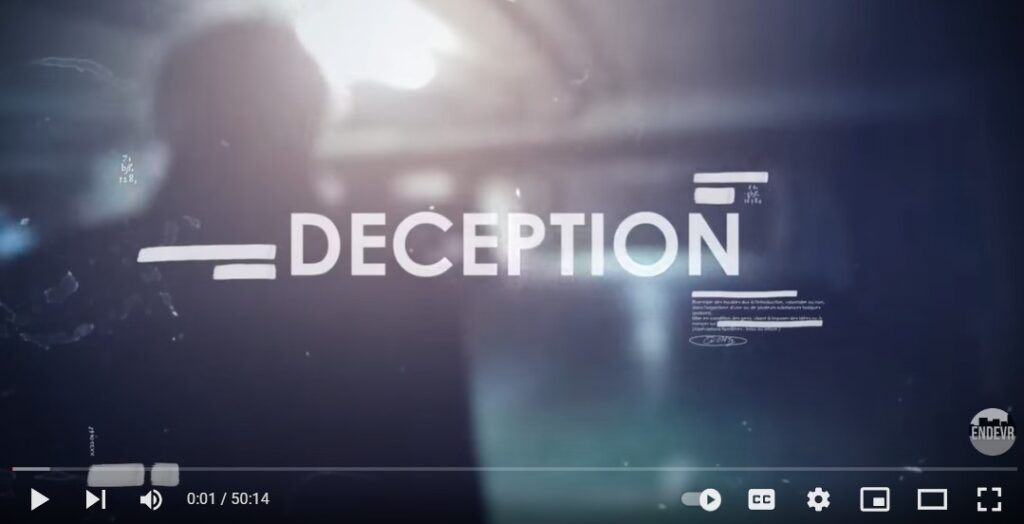
news feed
Led by Workers in Korea and Indonesia, May Day Protests All Over the World
Workers demanding economic justice took to streets across the globe to mark May Day, in an outpouring of worker discontent not seen since before the worldwide COVID-19 lockdowns.
The Death of over a Thousand Garment Workers in Bangladesh
Garment workers in Bangladesh fight back against deplorable conditions and work to raise consciousness
Tetsuya Yamagami Hailed A Hero
The shooting of ex-PM Shinzo Abe has blown open secret ties between Japan’s ruling party and the mass-marrying Moonies.
Iguala Mass Student Kidnapping
Authorities admit the state was behind the massacre of kidnapped students from a human rights focused teachers’ college in 2014.
Honduras Garifuna push for state protection
The Castro administration says it will support groups such as the Garifuna, but community members are demanding action.
Sri Lankan Revolution
Sri Lankan environmental policy failures helped fuel people power revolution - Mongabay
EFF: Ramaphosa Must Go
EFF’S Malema calls for Ramaphosa's impeachment over Phala Phala theft, kidnapping saga - Eyewitness News (EWN)
Hawaiian Freedom Movement
2022 could be a big year for Native Hawaiian issues at the Capitol - Hawaiian Public Radio
Amazon Kills, Workers Fight Back
Amazon employee dies at New Jersey warehouse during Prime Day, Feds probe
Petro-Marquez: Colombia’s Energy Transition
Petro's and Marquez's programmoving "from an extractivist economy to a productive economy."
PetroVictory Consolidates Progressive Wave in Latin America
Petro´s victory in the Colombian presidential election constitutes a landmark - teleSur

